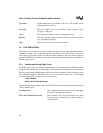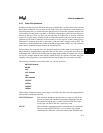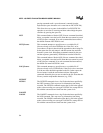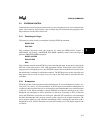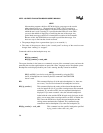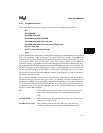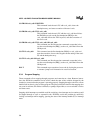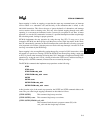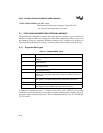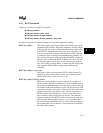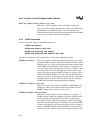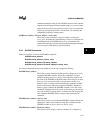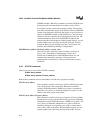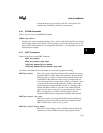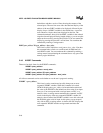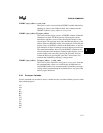
INTEL 186 EB/EC EVALUATION BOARD USER’S MANUAL
5-10
{STEP | SSTEP} FROM code_addr count
This command loads the user’s program counter (PC) with
code_addr and then single-steps count times.
5.4 DISPLAYING AND MODIFYING PROGRAM VARIABLES
iECM-86 provides commands to display and modify program variables in several formats. In
addition to simple variables such as bytes and words, more complicated variables such as reals
and character strings are supported. iECM-86 commands allow variables to be displayed or
initialized either individually or as regions of memory that contain variables of the given type.
5.4.1 Supported Data Types
In addition to supporting access to variables of the above types, iECM-86 also provides
commands to access the microprocessor registers and other special program variables such as PC
(program counter), and SP (stack pointer). These commands include AX, AH, AL, BX, BH, BL,
CX, CH, and CL.
Table 5-1. Supported Data Types
Data Type Description
BYTE A BYTE is an eight-bit variable. No alignment rules are enforced for BYTE
variables.
CHAR A CHAR is a special case of a BYTE. CHAR variables are displayed as
ASCII characters.
WORD A WORD is a 16-bit variable. The address of a WORD is the address of its
least significant byte.
DWORD A DWORD is a 32-bit variable. The address of a DWORD is the address of
its least significant byte.
STACK A STACK variable is a 16-bit variable that resides in the system stack. The
address of a stack variable (
stack_addr
) is taken to be relative to the current
stack pointer
STRING A STRING is a sequence of ASCII characters that are terminated by the
NUL character. The ASCII character NUL has the binary value of zero.
PORT A PORT is an 8-bit I/O port. No alignment rules are enforced for PORTs.
WPORT A WPORT is a 16-bit I/O port. The address of a WPORT is the address of its
least significant byte. A WPORT must start at an even address.



